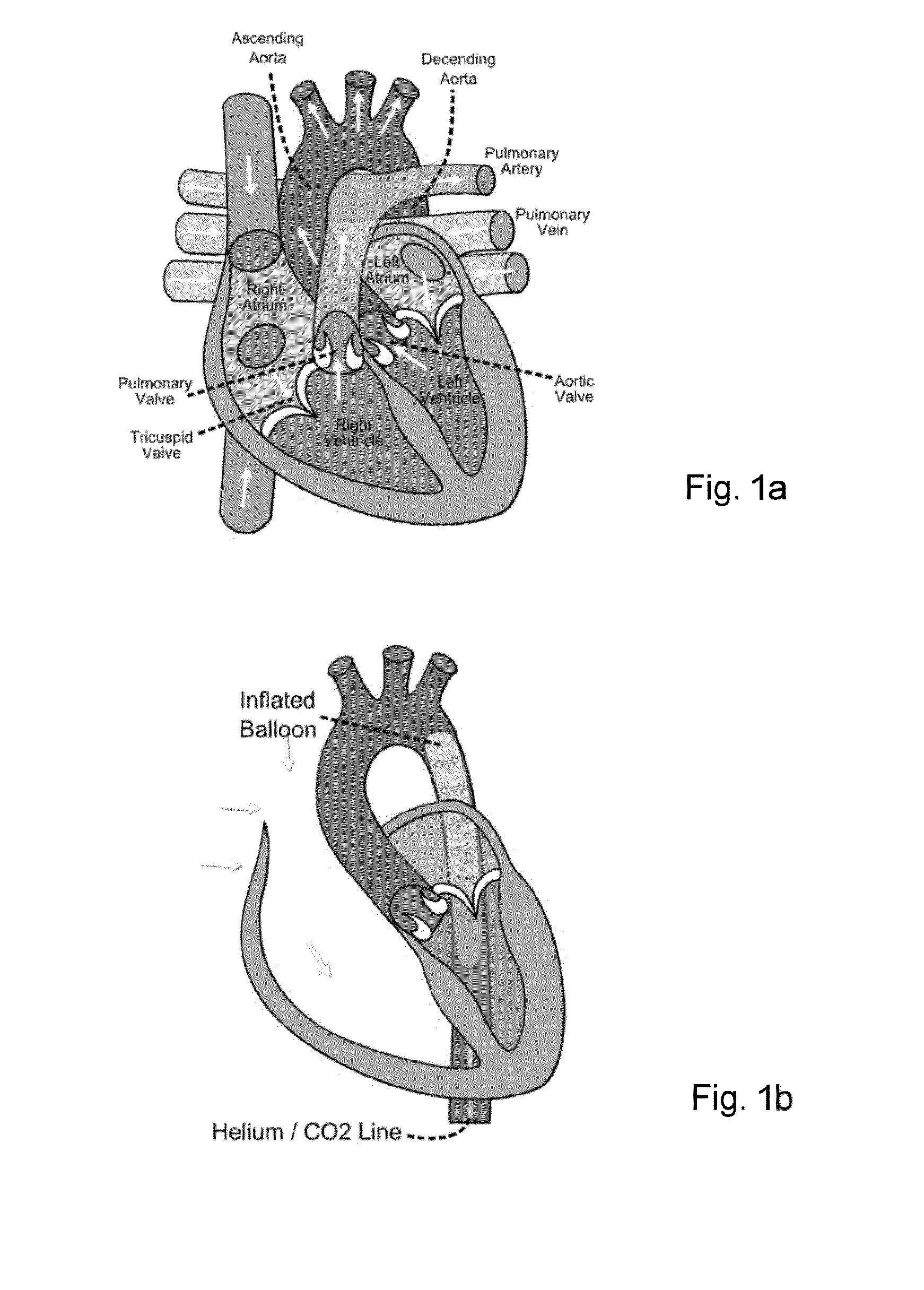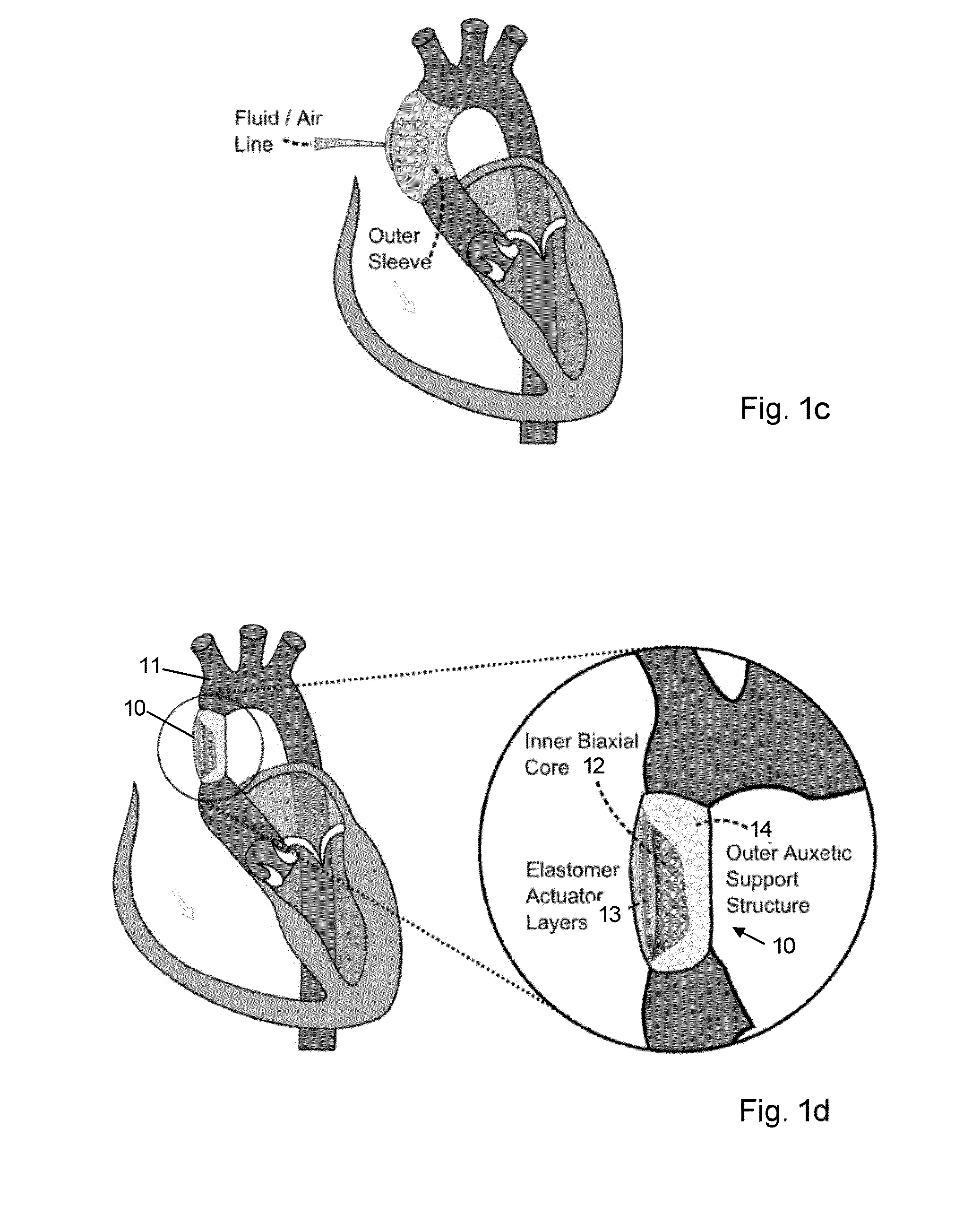Electroactive actuators
a technology of actuators and actuators, applied in the field of actuators, can solve the problems of iabps not being able to deploy for long periods of time, restricting patients to bed rest, and requiring percutaneous tubes
- Summary
- Abstract
- Description
- Claims
- Application Information
AI Technical Summary
Benefits of technology
Problems solved by technology
Method used
Image
Examples
Embodiment Construction
[0042]The invention is described in further detail below by way of example and with reference to the accompanying drawings, in which:
[0043]FIG. 1a is a schematic cutaway diagram illustrating the main components of a human heart;
[0044]FIG. 1b is a schematic illustration of an intra-aortic balloon pump in place within an aorta;
[0045]FIG. 1c is a schematic illustration of an extra-aortic balloon pump in place around an aorta;
[0046]FIG. 1d is a schematic drawing of an exemplary actuator connected to an aorta;
[0047]FIG. 2a is a schematic cross section of the structure of an exemplary actuator;
[0048]FIG. 2b is a schematic diagram illustrating the arrangements of interleaving electrodes for the exemplary actuator of FIG. 2a;
[0049]FIG. 3 is a series of schematic illustrations showing an exemplary process for fabricating the elastomeric and support structure layers of an actuator;
[0050]FIGS. 4a and 4b are photographs of exemplary braided tubular structures for an inner support structure of ...
PUM
| Property | Measurement | Unit |
|---|---|---|
| Dielectric polarization enthalpy | aaaaa | aaaaa |
| Ratio | aaaaa | aaaaa |
| Electric potential / voltage | aaaaa | aaaaa |
Abstract
Description
Claims
Application Information
 Login to View More
Login to View More - R&D
- Intellectual Property
- Life Sciences
- Materials
- Tech Scout
- Unparalleled Data Quality
- Higher Quality Content
- 60% Fewer Hallucinations
Browse by: Latest US Patents, China's latest patents, Technical Efficacy Thesaurus, Application Domain, Technology Topic, Popular Technical Reports.
© 2025 PatSnap. All rights reserved.Legal|Privacy policy|Modern Slavery Act Transparency Statement|Sitemap|About US| Contact US: help@patsnap.com



